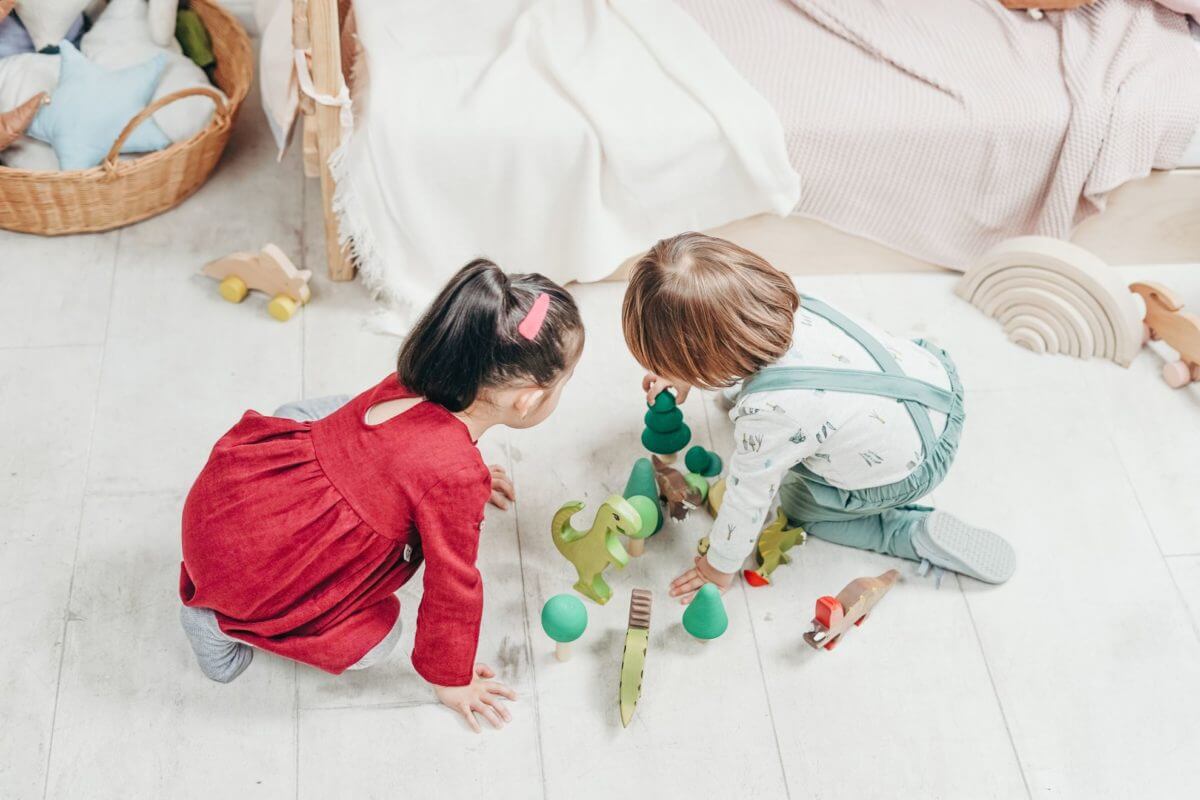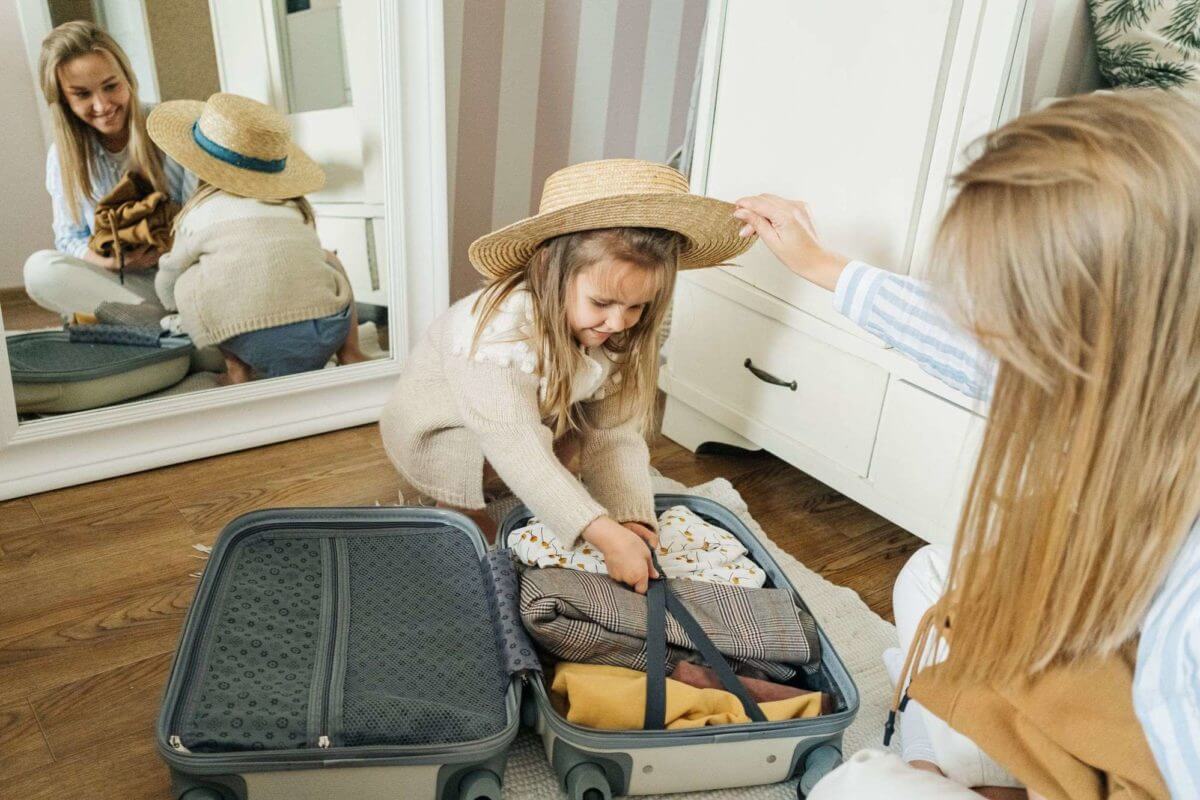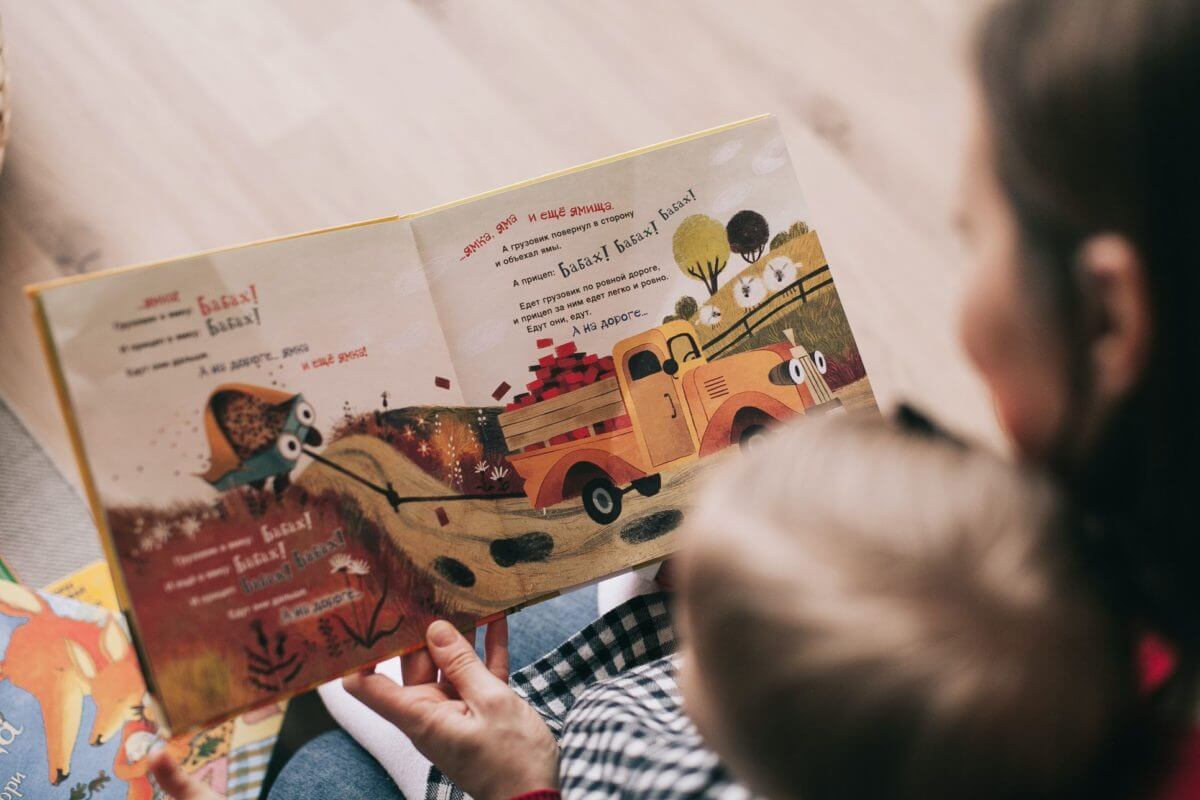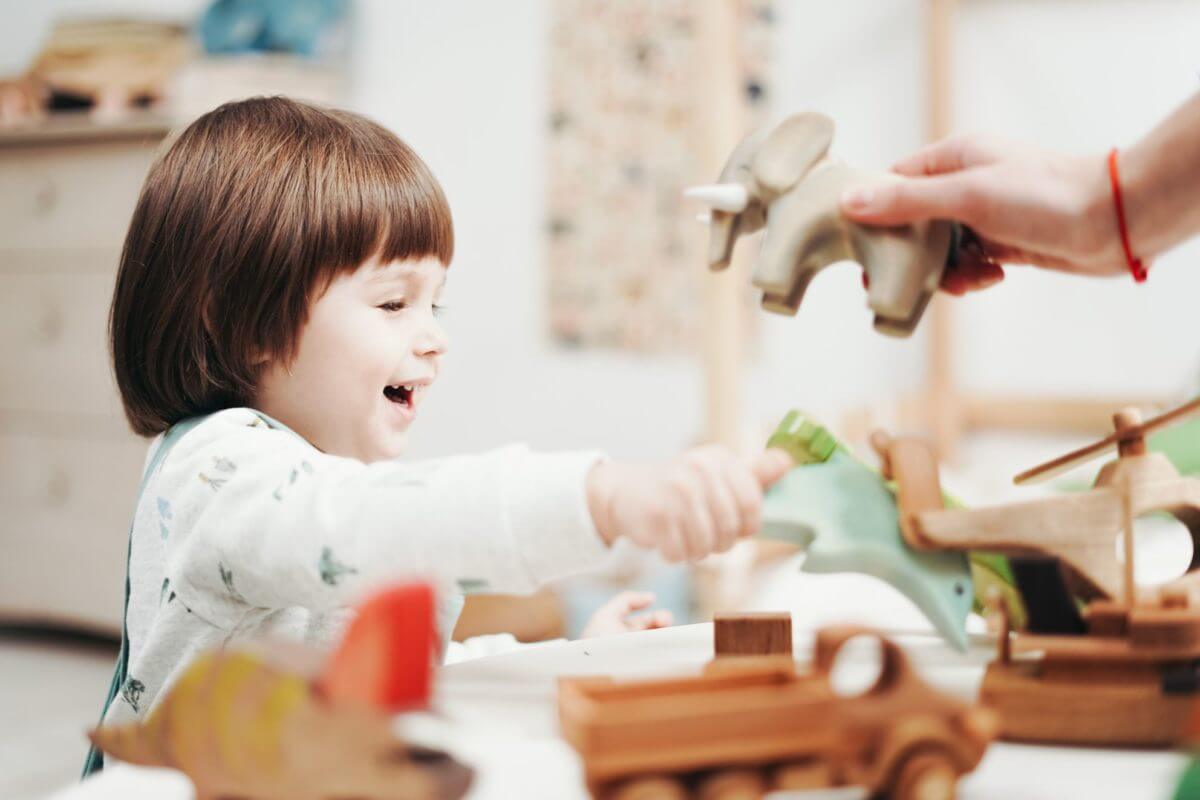Even if you plan to relocate to the suburbs within the same city, relocating with kids demands additional time and other resources. Not to mention what logistics you need when relocating to a big city. No matter what your reasons to move are, whether you’ve got a job in a new city, finally found your dream place, or decided to move back home to be closer to your elder parents, relocations have to be planned to the tiniest detail.
9 Tips to Make Moving With a Toddler Easier
Moving with a toddler to your dream home can be quite challenging. However, if you plan all the steps in advance and get all the help you can from family and friends, the relocation process can be significantly easier. Dealing with kids and moving at the same time is not easy to do. However, it’s possible! Here are all the essential tips to help you relocate with your kid and still not lose your temper.


Tip #1: Patience – the Magic Word When Moving With a Toddler
No matter how old they are, children and moving require a lot of patience. Relocating with toddlers is actually quite more demanding than doing it with older children since toddlers are still not at the age to completely understand what is happening. Also, they are still very sensitive, so if you feel stressed out, they will sense it and mirror your emotions. Helping kids cope with moving is possible in cases when they are old enough to understand the consequences of the move, like going away from their friends, taking a long trip to a new place, or getting a new and bigger room. However, explaining this to a toddler is borderline impossible.
Let Your Child Maintain Routines Even When Relocating to a New Place!
For toddlers, long flights and traveling can be pretty exhausting. More precisely, the whole experience is so upsetting for them, they could end up crying in the airplane for hours until they calm down. Also, if you’re relocating to another time zone and change their sleeping habits or eating routine, it affects their behavior. The only solution in this situation is to try to keep up with the routines as much as you can. Also, no matter how busy you are, don’t forget to spend some time with them.


Tip #2: When It Comes to Kids and Moving, Pack the Kid’s Bedroom Last
When determining the packing priority of your home, make sure to leave the packaging of the children’s bedrooms last. Since you’ll be occupied boxing up the rest of the household, while the cross-country movers will handle the household things, providing your toddlers with a separate space to rest or play, away from hustle and bustle, will be the best option in this situation.
Sort Out the Toys and Donate the Surplus
We bet your children have hundreds of toys they don’t use. So, if you want to avoid cluttering their rooms with unnecessary toys they might have already outgrown, ensure to sort out all of them and donate unwanted items to local charities. This way, not only will your household list be shorter, but you will also do something good for other children in need.


Tip #3: Don’t Leave the Packing for the Last Minute
The packing of household items will take a lot of your free time, and it can take months. All this means that last-minute relocating with a small kid is simply not possible. For that reason, having a detailed packing list and schedule is the most effective way to deal with the relocation.
To move efficiently, go room by room and decide what to get rid of and what to pack. Acquire all necessary packing materials and consider using some alternatives to reduce costs when relocating. Dealing with children and organizing your move simultaneously is not easy to do. And this is the main reason why you should finish packing in advance and be entirely prepared for long-distance movers before they arrive in front of your house.


Tip #4: Parenting Tips on How to Prep the New Home for Your Kids
Relocating to a new home means you should make it a safe environment for your kid, whose curiosity is especially noticeable at this age. Learning how to babyproof a house and acquiring all necessary equipment like stair fences, safety locks, plug socket covers, or table protectors for sharp edges is definitely something to put in your relocation to-do list.
How Much Does it Cost to Babyproof the Entire House?
Although every room carries a risk for itself and has to be childproofed, fortunately, proofing the home for a baby or toddler is not that expensive. In total, the whole cost of babyproofing to include in the relocation budget equals around $200.
Also, when designing the house interior, ensure to leave out all potentially risky furniture pieces like coffee tables made of glass, sharp edges, or putting breakable decorations so low your children could easily reach them. And of course, don’t forget to follow these tips when it comes to designing the children’s room too. Consult your interior designer about all the practical hacks that could help you use the space to its maximum. Just think of all those creative storage ideas for children to keep their toys in and have a great aesthetic effect too. And if you need a couple of more useful pieces of advice on how to baby-proof house, take a look at the video below and see how other parents did it!
Tip #6: Organize What Your Kids Will Do on the Moving Day
Keeping your toddlers occupied on a moving day and away from the other rooms in the house while the cross-country moving company team is loading the stuff into the truck is definitely one of the best relocation day tips. Knowing that your children are safe and taken care of while you’re dealing with relocation is the reason why you should pack their bedroom last.
Hire a Babysitter to Help You With Kids or Ask Family and Friends to Do It
Preoccupied with all obligations regarding the relocation, you won’t have enough time to devote yourself to the kid. Hiring a professional babysitter or asking your family and friends to help you out are two possibilities to ensure they are taken care of. So don’t forget to set these details in advance too. Remember, as long as your children’s routines are the same, they shouldn’t have too much trouble dealing with changes.


Tip #7: Pack the Kid’s Essential Box for Relocation
Having a box of relocating essentials full of medicines, important documents, linen, and clothes for the first couple of weeks until your things are delivered to your new address is a must. And so is preparing the essentials box.
Diapers, basic toiletries, and some spare clothes are the priorities when boxing up the essential box. However, remember to also pack their favorite toys here – especially those they use while getting ready to sleep, blankets, and anything else that could keep them occupied. Of course, packing their favorite food is also something you shouldn’t forget about, so put it high on the packing list. If you want to find out more useful tips on how to relocate with children, take a look at the video below, and find out what other parents have to say about it!


Tip #8: Set Up the Kid’s Bedroom First When You Arrive at the New Home
One of the first things to do after relocating is unboxing and organizing furniture. Relocation will definitely make your babies feel exhausted and want to sleep. For that reason, setting up their bedrooms first will be one of the top priorities when unpacking after a move.
This is also important to do because your children can face another potential problem – unfamiliar surroundings. Taking their crib and packing the essential toys to equip their room are definitely good tactics to mitigate the consequences of change. Also, setting up their room first will provide them with a safe place while you’re dealing with the rest of the house. While you’re unboxing the items, you can again hire a babysitter to help you out so you can finish all the work much faster without any distractions like preparing meals for children or playing with them because they are bored.


Tip #9: Hire a Cross-Country Moving Company to Handle the Most Complicated Parts of the Long-Distance Move
Moving cross-country implies thousands of details. Having a helping hand to facilitate the whole cross-country moving experience is of tremendous importance, especially when you’re relocating with children.
However, choosing the right cross-country movers is a process in itself. To avoid one of the most common relocation mistakes and falling into the hands of relocation scams, ensure to explore the internet for recommendations for relocation companies and check the reviews and whether the relocation company is legitimate.
It’s Tough to Handle Children and Moving, so Book Cross-Country Moving Services in Advance
The moment you have scheduled your relocation day and provided your long-distance moving company with a household inventory list, it is the right time to start thinking about long-distance moving services. Professional long-distance movers can even provide you with all the necessary packing services, so make sure to book them in advance.
Also, if you want to move the car to a new location, don’t forget to ask them how car shipping works and schedule auto-shipping, too. Agreeing on all the details with one company is definitely the easiest way to organize the whole process, and have a stress-free move, so make sure to choose the movers who can provide you with all types of services you need.
FAQ
How Can I Make the Moving Process Easier for My Toddler?
When moving with a toddler, it’s important to keep their routine and sense of security intact. Give them ample time to adjust to the move with plenty of warning before the actual day. Involve your child in the process – let them pick out things for their new room or say a special goodbye to the old one. Make sure your child has their own box filled with favourite items that can move with them and allow them to unpack when you arrive at your new home. Finally, ensure that they have a dedicated space in your new home that is theirs alone where they can explore and feel comfortable.
What Are Some Tips for Packing With a Toddler Around?
Packing with a toddler around can be tricky. It’s important to keep them safe, entertained, and out of harm’s way. Before you start packing, create a plan of action so everyone knows what their tasks are. Set up a play area away from where you’re packing with plenty of toys and activities to keep them occupied. When possible, involve your child in the packing process by having them pack their own items such as clothes or toys, which will help them feel like they’re part of the move too. Finally, be sure to label all moving boxes because it will make it easier for your toddler to recognize when it comes time to unpack.
How Can I Keep My Toddler Safe During the Move?
Keeping your toddler safe during the move should be a priority. Make sure they are always supervised during the process and that any hazardous items are kept out of their reach. If possible, designate a room or space for them to stay in while the movers pack up your home – this will give them a place to feel secure and keep them away from potential danger. Additionally, ensure that you have enough supplies for your children such as food, diapers, toys, and comfort items to keep them settled throughout the move.
How Can I Ease My Toddler’s Anxiety During the Move?
Easing your toddler’s anxiety during the move can be difficult, but there are some steps you can take to help. Start by talking openly with them about the move and explaining why it is happening. Give them plenty of time to ask questions and express their feelings. You should also involve them in the packing process when possible; this will help them feel like they are part of the move too. Additionally, provide comfort items such as their favorite stuffed toy or blanket for reassurance. Making sure to have several familiar items around during the move may also be helpful in easing their anxiety.
What Should I Do if My Toddler Becomes Overwhelmed During the Move?
If your toddler becomes overwhelmed during the move, it’s important to take a few steps to help them. First, try to provide a safe, secure space for them where they can go and relax away from the chaos of the move. Talk to them calmly and explain what is happening in simple terms. You should also allow them plenty of time to express their feelings and provide comfort items such as stuffed animals or blankets to help soothe their emotions. Additionally, involving them in a fun activity like drawing or playing a game can be an effective distraction.
How Can I Make the New Home Feel Familiar for My Toddler?
Making the new home feel familiar for your toddler can be done by introducing them to the space in advance of the move. Show them pictures or a video of the house before they get there, so they can get an idea of what it looks like and what rooms are where. You should also make sure that you bring along some familiar items from their old house to the new one, such as favorite furniture or toys, which will help give them a sense of familiarity and comfort. Finally, create a special space in their room where they can go to relax when they need to.
How Can I Involve My Toddler in the Unpacking Process?
To get your toddler involved in the unpacking process, you can set aside a few tasks that are tailored to their age and ability level. For example, they can help take items out of boxes, put away books on shelves, or organize toys into bins. You can also make a game out of it and have them search for items as you unpack each box together. This will keep them engaged and give them a sense of ownership and accomplishment once everything is all set up in their new home.
What Should I Do if My Toddler Is Resistant to the Move?
If your toddler is resistant to the idea of relocating, it’s important to stay patient and understanding. Try to explain why you’re relocating in a positive way and reassure them that they will make new friends and have more opportunities in their new home. You can also involve them in the moving process by allowing them to pick out items for their room or pack up some of their belongings. If possible, make sure you visit their new home before you actually move, so they can see the place for themselves and get an idea of what it’s like.



